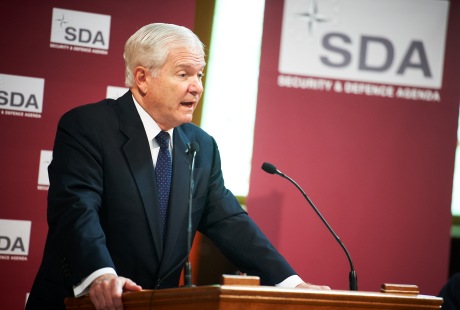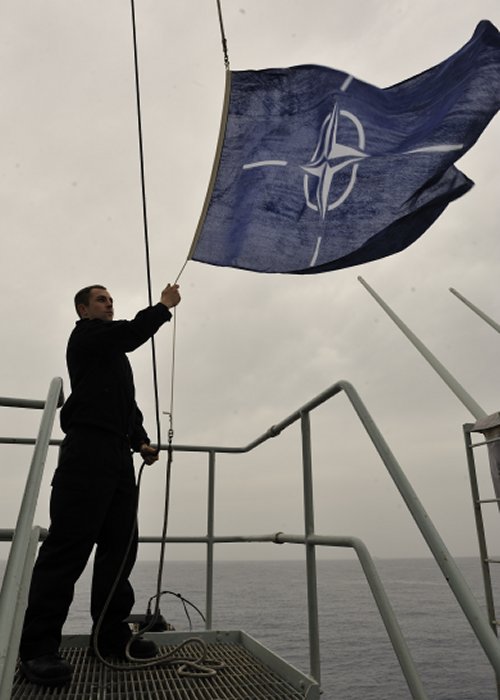Ashton claims an “autonomous” Diplomatic Service. Details
(BRUSSELS2) Cathy Ashton, the EU's chief diplomat made her first text proposal on the organization and functioning of the European External Action Service (EEAS). This text largely takes up the precepts set out in the presidency's report last September (1). But clarifies it, even detaches itself slightly from it on certain points. He partly agrees with Parliament (2) on budgetary control but refuses to give in on the organization of the service (no political representation but a structured general secretariat).
Above all, it gives the EEAS the means for its action and a certain autonomy in relation to the European Commission. Now this text will certainly be criticized. But it has an equally certain interest: to allow the EEAS to come out of limbo and for the legislative discussion to begin. Incidentally, we can notice that Cathy Ashton respected the deadline to present her proposal (before April). And that its content is rather more ambitious than we might have feared at the start...
In fact, the High Representative has above all given herself room for maneuver for the future management of the Service, giving it a certain "possibility of autonomy". And if there was a word that transcends the whole text, it is this word: budgetary autonomy, legal autonomy, autonomy in personnel management, autonomy in security rules, etc.
Definition of the EEAS
The EEAS is “ an autonomous EU office, separate from the Commission and the General Secretariat with the necessary legal capacity to perform its tasks and achieve its objectives. is it written. It has its headquarters in Brussels and includes a "central administration" and the Union's delegations in third countries and to international organizations (NB: the representations in the Member States remain attached to the Directorate-General for Communication of the Commission ). The service will of course support the work of the High Representative. But he can also assist the President of the Commission, the Commission and the President of the European Council ».
Staff management autonomy
It is the High Representative who will be the appointing authority (and not the Commission or the Council). This has two consequences: on the choice of people recruited to the EEAS and their status.
• " All the appointments will be made on the basis of merit and on the broadest possible geographical basis. » It can be noted that there is therefore no commitment to equality between Member States, and even less to quotas. A notion condemned by Cathy Ashton (2).
• The HR intends to remain, in a way, free to define certain selection procedures. This will be the case for the High Representative of " define selection procedures ". Just as it will be up to her to define the rules of mobility and rotation within the service. Headquarters staff will periodically have to serve in delegations, and vice versa (as in any traditional diplomatic service).
• In general, the status EU staff (civil servants, contractors and other contracts) will be fully applicable. All temporary agents will be treated on the same footing "ofequality » whatever their origin (diplomatic services of the Member States or EU personnel), which implies an increase not only of salaries and bonuses (in other words, a French or Swedish diplomat will not have to receive more, in the form of compensation diverse, than a Bulgarian or Latvian diplomat).
A classic structure of a State Department or a Ministry of Foreign Affairs
Service Structure
The EEAS will be administered by a Secretary General, assisted by two Deputy Secretaries General. It will include a number of directorates general, organized both geographically and multilaterally or thematically. The main thing takes up theorganization chart already released on this site. A legal service has been set up, working closely with the legal service of the Council and the Commission. Cooperation with the Commission is - in my opinion - one of the most difficult points for the EEAS. It is thus specified that the EEAS will take " take part in the procedures and preparatory work for the texts prepared by the Commission in its field ". That is to say to the inter-departmental procedures. The EEAS will have its own security department and rules.
Specificity of crisis management structures.
The civil-military crisis management structures see their autonomy largely consolidated. The CMPD (civil-military planning unit), the CPCC (civilian crisis staff, the military staff and the situation center (analysis and intelligence centre) are placed under the direct authority and responsibility of the High Representative". There is no express mention of a connection to the Secretary General of the EEAS. " The specificities of these structures, as well as the particularities of their functions, recruitment and staff status are respected”. Day-to-day management will continue either within each DG or by the General Secretariat.
A key element of this proposal, the EEAS must have the necessary budgetary autonomy and be considered as a "institution", with a "specific section in the EU budget". It will thus be subject to the usual discharge conditions. Which, by the way, solves the previous problems that opposed the European Parliament to the High Representative, Javier Solana, on certain CFSP budgets (3). For financial instruments, a subtle division is made according to the nature of the funds, diplomatic (CFSP, etc.) or mixed: external/development/neighborhood, etc.).
• The diplomatic fundare under the high hand of the High Representative, but as Vice-President of the Commission. East
solely responsible for A to Z (from general programming to operational use). These are: the CFSP budget, the instrument for stability, the instrument for cooperation with industrialized countries, communication and public diplomacy and observation missions
elections.
• The "mixed" funds, the EEAS has a competence shared with the relevant Commissioners (enlargement or development or other) for the programming of other external funds: European Development Fund (EDF) and Development Cooperation Instrument (DCI), European Partnership and Neighborhood Instrument (ENPI ), Democracy and Human Rights (EIDHR), Cooperation with industrialized countries (ICIC), Cooperation for nuclear safety. The EEAS thus ensures the programming of the first three stages: global financial envelopes for each region, "country and regional strategic papers" (CSP/RSP) and "national and regional indicative programmes" (NIP/RIP). While the last two steps (national allocations and implementation) remain the responsibility of the commissioner. The programming will be done more closely jointly with the commissioner concerned — Development for the EDF and the DCI, Enlargement for the INPI — and the budget proposal will be made "jointly" to the college of commissioners.
(Nicolas Gros-Verheyde)
(1) The outline of the diplomatic service EU approved
(2) The EP dictates its three wishes to Cathy Ashton
(3) Parliament unhappy with lack of transparency in CFSP budget Download the text of the proposaln

